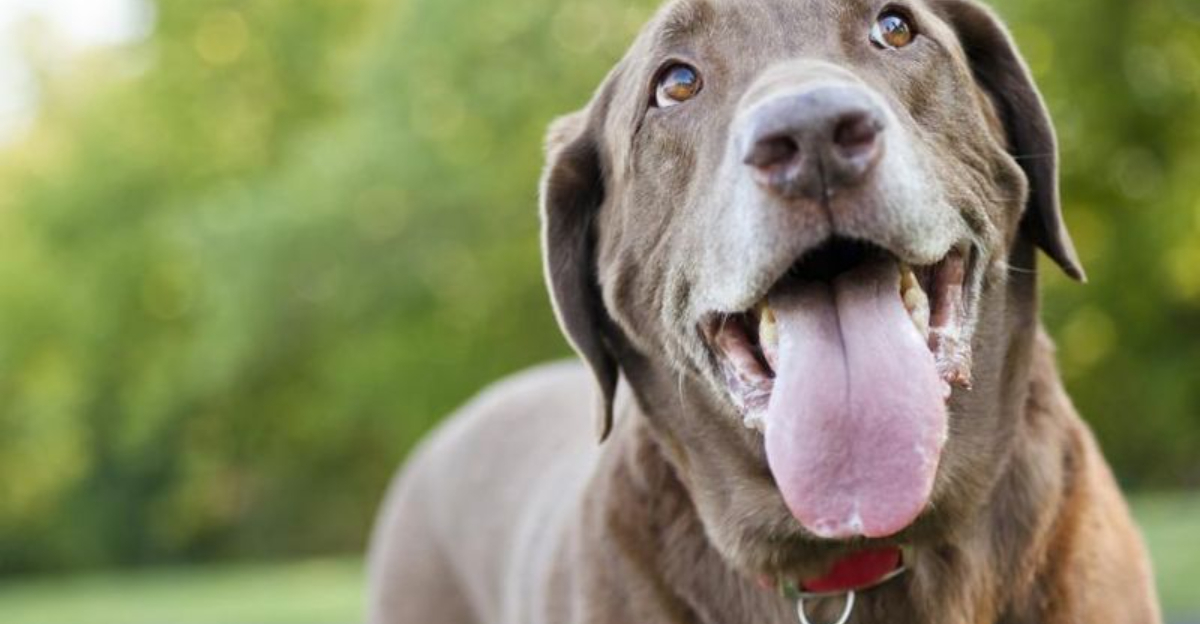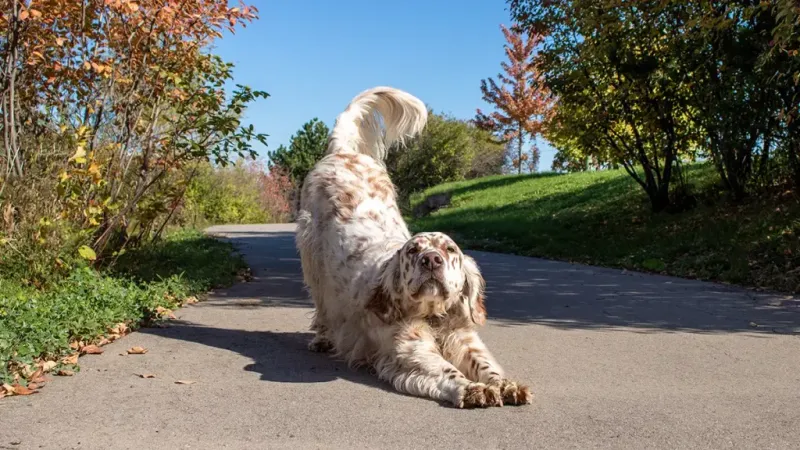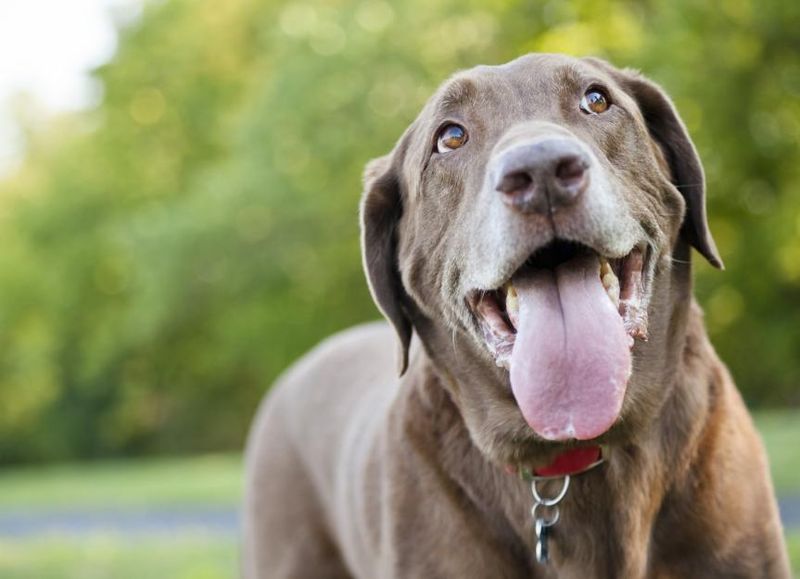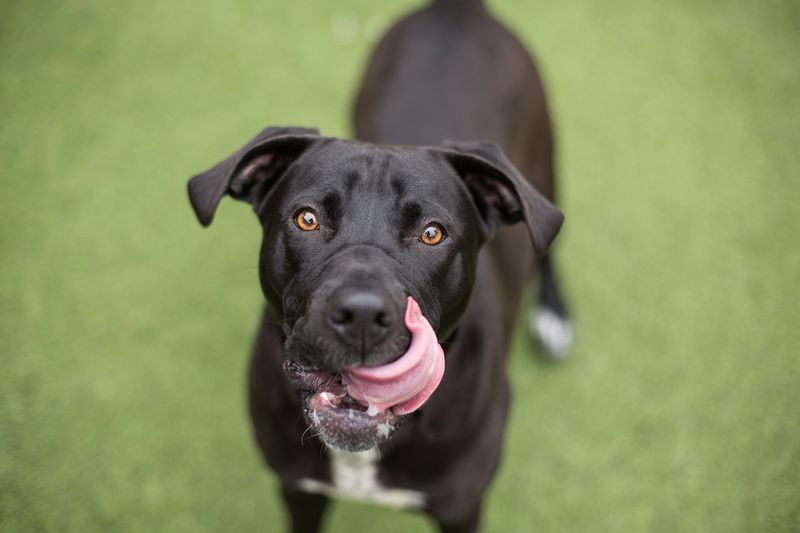Understanding your dog’s body language is key to building a strong, trusting relationship. Dogs communicate a plethora of emotions and intentions through subtle physical cues. Recognizing these signals can help you respond appropriately and foster a better connection with your pet. Here are ten common dog body language signals and what they really mean.
Wagging Tail
A wagging tail is often perceived as a universal sign of happiness, but it can have different meanings depending on the context. When a dog wags its tail energetically, it usually indicates excitement or affection. However, the speed and direction can change the meaning. A slow wag might indicate uncertainty, while a high, stiff wag can suggest alertness or agitation.
Did you know? Dogs have the ability to wag their tails in different directions to communicate with both humans and other animals. Observing these nuances can provide a deeper insight into your dog’s emotions.
Raised Hackles
Raised hackles, or the hair standing up along a dog’s spine, can be a sign of fear, aggression, or excitement. It’s a reflexive reaction that varies from dog to dog. Some may raise hackles when feeling threatened, while others do so during play.
The key to interpreting raised hackles is to observe the dog’s overall behavior and surroundings. Are they growling or barking? Or are they just intensely focused on something? This contextual understanding can help determine whether they’re feeling anxious or just playful.
Play Bow
The play bow is one of the most recognizable dog signals indicating a desire to play. It involves the dog lowering its front legs while keeping its rear in the air. This posture invites other dogs or humans to engage in fun activities.
It’s a signal that your dog is feeling friendly and ready for some interactive play. Whether they’re inviting you or another dog, the play bow is a universal canine gesture promoting social interaction and bonding.
Yawning
While often associated with tiredness, a dog’s yawn can also indicate stress or anxiety. Dogs may yawn in new or uncomfortable situations as a calming signal. It’s their way of trying to relax themselves and others around them.
If you notice your dog yawning frequently, consider the environment and circumstances. Are they in a new place, meeting new people, or perhaps feeling overwhelmed? Identifying the cause can help you provide comfort and reassurance to your furry friend.
Baring Teeth
Baring teeth is often a clear sign of aggression or fear in dogs, but context is crucial. While a snarl typically indicates discomfort or a warning to back off, some dogs may bare their teeth during play without aggression.
Understanding the situation and the dog’s body language can help discern whether this is a playful gesture or a serious warning. Observing other signals like growling or body posture can provide further clues about their intentions.
Tucked Tail
A tucked tail often signifies fear, submission, or anxiety in dogs. This gesture involves the dog tucking its tail between its legs, often accompanied by crouching or avoiding eye contact.
If you spot your dog with a tucked tail, assess the environment for potential stressors. This body language often appears in unfamiliar or intimidating situations, signaling a need for comfort and reassurance from their owner.
Panting
Panting is a normal behavior in dogs, primarily used to regulate body temperature. However, excessive panting can also indicate stress, excitement, or even pain. It’s important to consider the context and other accompanying behaviors.
During hot weather or after exercise, panting is typical. But if it occurs without clear reasons, it might be worth consulting a vet. Understanding your dog’s normal behavior patterns can help distinguish between regular panting and signs of distress.
Ears Back
When a dog pins its ears back, it can be a sign of submission, fear, or contentment. The context and accompanying body language are key to interpreting this signal accurately.
If your dog has its ears back while displaying other signs of stress, such as a tucked tail or avoiding eye contact, they might be feeling anxious. Conversely, if they’re wagging their tail and seem relaxed, it could simply mean they’re feeling calm and comfortable.
Staring
A dog’s stare can convey various messages, from love and affection to a challenge or demand for attention. Prolonged eye contact can be a bonding moment, but it can also be a sign of dominance or aggression.
Understanding the context and the relationship with your dog is crucial. A soft gaze accompanied by a relaxed body indicates affection, while a hard stare with tense posture might suggest a challenge. Recognizing these differences can enhance communication with your pet.
Licking Lips
Licking lips in dogs isn’t always about food. It can be a sign of stress, anticipation, or appeasement. Dogs may lick their lips when feeling anxious, as a calming signal to themselves and others.
If your dog frequently licks its lips, consider the situation they’re in. Are they waiting for a treat, or are they in a stressful environment? Identifying the reasons behind this behavior can help address their emotional needs effectively.










